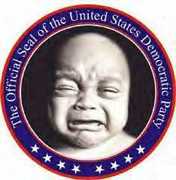星期二晚间,布什向全国发表了一篇关于伊拉克问题的讲话(全文)。美联社(AP)是怎样报道总统讲话的,本评论员来现场热评一下:
美联社的报道当晚上来雅虎(yahoo)新闻点击数排行榜第一位。这篇报道是这样阴阳怪气地报道的:
No connection between Saddam Hussein and the Sept. 11 attacks was ever established, but Bush said Iraq is a central front in the war on terrorism in part because the insurgency is led by Jordanian militant Abu Musab al-Zarqawi, who has sworn allegiance to bin Laden.
这个写法有很多问题:
1,美国正在进行的是反恐战争,不只是报复9-11恐怖袭击的战争。这样的报道的假定是,只要某个恐怖分子与9-11没有直接联系,美国就不可以正当防卫。这是一个嵌入新闻报道中的左派的政治花言巧语。9-11恐怖袭击提供了一个机会,使美国人民终于看清了那些不顾一切屠杀平民的恐怖分子的真面目。在这之前,他们的真面目一直被左派媒体精心地掩盖着;那些屠杀以色列平民的恐怖分子被左派媒体刻画成了受害者。现在,左派媒体又不断地,反复地玩弄一个单独的视角:没有证据显示萨达姆和9-11有直接联系。问题是,萨达姆和恐怖主义,和本拉登的联系呢?又是谁说只有和9-11有直接联系的恐怖分子才是恐怖分子?在克林顿任内,本拉登早就公开地向美国宣战,并且他不是口头上的宣战,他在克林顿任内就已经发动多次恐怖袭击,屠杀了多名美国人和其他平民。这包括:第一次世贸中心爆炸,两次使馆爆炸,科尔号袭击等等。克林顿对此置若罔闻,甚至以没有合适的罪名为由拒绝了某国要引渡本拉登的提议。所有这些都不算,难道只有布什任内的9-11才能算数?
2,美国9-11调查委员会的正式报告中,还有其他情报显示,萨达姆政权和本拉登的恐怖组织一直有着联系。9-11之前,萨达姆派他的高级情报官员与基地组织的恐怖头子会面。效忠基地组织的某些外围组织展期公开地在伊拉克活动。这样的重要联系,这篇报道里面却只字不提。并且,美联社从来也没有认真报道过这些事实。难道美国人民没有必要了解这些事关重大的安全信息?难道美国不应该反击萨达姆这样的极端公开反美,并且和基地组织进行联系的恐怖政权?这是此记者为了自己的左派政治偏见,向美国人民隐瞒重要的事实。置美国的国家安全和记者的职业道德于左派偏见之下。
3,Zarqawi不只是战后宣誓效忠本拉登。更重要的是,Zarqawi一直就和本拉登有着密切的联系。美军在伊拉克发现的Zarqawi的指挥部的墙上,也明确地挂了“基地组织伊拉克分部”的铭牌。这些事实本报道没有提。它却试图只用Zarqawi宣誓效忠本拉登的事实来弱化布什讲话中伊拉克是反恐战争中心的判断。
惨绝人寰的9-11恐怖袭击,不但使美国人看清的世界上的邪恶的存在;它也使得美国人认清了美国左派政治领袖的无能,绥清和左派媒体的本性。9-11唤醒了一头被左派政治家和媒体催眠的雄狮。世界上的恐怖分子和暴君们错估了美国这头雄狮的决心和力量。他们现在终于在阿富汗和伊拉克体会到了。美国在伊拉克一定会成功。
附:
1, 官方的9-11调查报告中关于萨达姆和基地组织的联系的详细文本和具体页码。
2, 更多萨达姆和基地组织的联系的证据。
本文关键词: 左派媒体, 左派, 恐怖主义, 伊拉克, 布什, 媒体





1 条评论:
September 11 Commission report: Links between Saddam and AQ
September 11 Commission report (p. 61)
With the Sudanese regime acting as intermediary, Bin Ladin himself met with senior Iraqi intelligence officer in Khartoum in late 1994 or early 1995. Bin Ladin is said to have asked for space to establish training camps, as well as assistance in procuring weapons, but there is no evidence that Iraq responded to this request . . . [but] the ensuing years saw additional efforts to establish connections.
September 11 Commission report (p. 66)
In March 1998, after Bin Ladin's public fatwa against the United States, two al Qaeda members reportedly went to Iraq to meet with Iraqi intelligence. In July, an Iraqi delegation traveled to Afghanistan to meet first with the Taliban and then with Bin Ladin. Sources reported that one, or perhaps both, of these meetings was apparently arranged through Bin Ladin's Egyptian deputy, Zawahiri, who had ties of his own to the Iraqis.
September 11 Commission report (p. 66)
Similar meetings between Iraqi officials and Bin Ladin or his aides may have occurred in 1999 during a period of some reported strains with the Taliban. According to the reporting, Iraqi officials offered Bin Ladin a safe haven in Iraq. Bin Ladin declined, apparently judging that his circumstances in Afghanistan remained more favorable than the Iraqi alternative. The reports describe friendly contacts and indicate some common themes in both sides' hatred of the United States. But to date we have seen no evidence that these or the earlier contacts ever developed into a collaborative operational relationship. Nor have we seen evidence indicating that Iraq cooperated with al Qaeda in developing or carrying out any attacks against the United States.
Bipartisan Senate Intelligence Committee Report (Conclusion 92, p. 345)
The Central Intelligence Agency's examination of contacts, training, safehaven and operational cooperation as indicators of a possible Iraq-al Qaida relationship was a reasonable and objective approach to the question.
Bipartisan Senate Intelligence Committee Report (Conclusion 93, p. 346)
The Central Intelligence Agency reasonably assessed that there were likely several instances of contacts between Iraq and al-Qaida throughout the 1990s, but that these contacts did not add up to an established formal relationship.
Bipartisan Senate Intelligence Committee Report (Conclusion 94, p. 346)
The Central Intelligence Agency reasonably and objectively assessed in Iraqi Support for Terrorism that the most problematic area of contact between Iraq and al-Qaida were the reports of training in the use of non-conventional weapons, specifically chemical and biological weapons.
Bipartisan Senate Intelligence Committee Report (Conclusion 95, p. 347)
The Central Intelligence Agency's assessment on safehaven--that al-Qaida or associated operatives were present in Baghdad and in northeastern Iraq in an area under Kurdish control--was reasonable.
发表评论